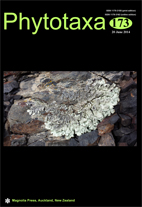Abstract
With 46 species recognized in the Flora of China, Premna is now one of the fifth largest genera in the mint family in China. Current classifications have placed Premna in the family Lamiaceae removing it from the family Verbenaceae, leaving the identity of many of the Chinese species difficult to resolve. In this study, based on protologues, and consulting both herbarium (including the types) and fresh specimens, P. crassa is reduced to synonymy of P. fulva; P. calcicola (ined.), P. crassa var. bijiangensis (ined.), P. crassa var. yuii, P. dopii, P. puerensis, P. shunningensis (ined.), P. straminicaulis, P. yuanjiangensis (ined.) and P. yunnanensis (nom. illeg.) are recognized as P. tapintzeana. Premna fulva and P. tapintzeana are similar to each other by having small corymbs, subequal stamens enclosed by the corolla tube, and equal or slightly 2-lipped calyces with 5 obtuse lobes, but also different in the shape of leaf blades and upper corolla lips, the indumentum of branchlets, petioles and peduncles, and their habitat. The present investigation provides complete taxonomic treatments, geographic distributions and ecological observations of P. fulva and P. tapintzeana.

